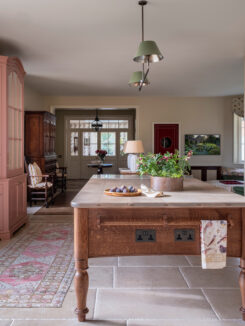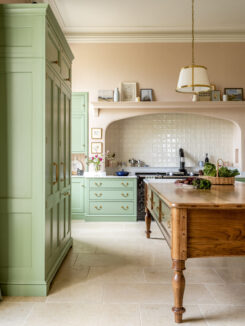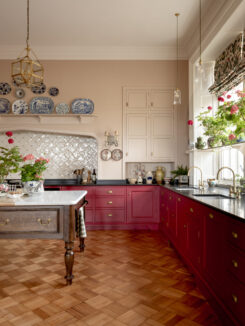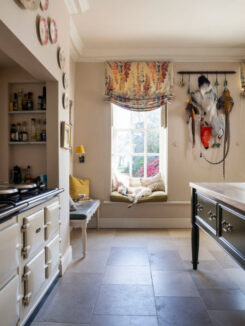Journal
In recent years, one piece of furniture has quietly reclaimed its place at the heart of the English country house kitchen; the cook’s table. Also known historically as the dairy table, this humble workhorse of domestic estate life is enjoying a renaissance among discerning English country house homeowners seeking both authenticity and practicality in their interior kitchen spaces.
Traditionally, the cooks table or dairy table was a freestanding food preparation table, usually found at the centre of large kitchens and sculleries. Made of solid timber found locally in the estate, typically oak, elm or pine, they provided a generous surface for everything from kneading bread and dressing game to rolling pastry and arranging preserves. With robust proportions, turned legs, and often a slatted base for storage, the cooks table or dairy table was built to be used, not admired. It had to be sturdy in construction and designed to last.
As a company, our endevors are guided by the work of the estate joiner, a specialist trade once closely tied to the long-term stewardship of period buildings. It was they who created the kitchens we so admire from the past, and as such we have paid close attention to the the cook’s table and how it evolved in our lived in domestic architecture over the centuries.
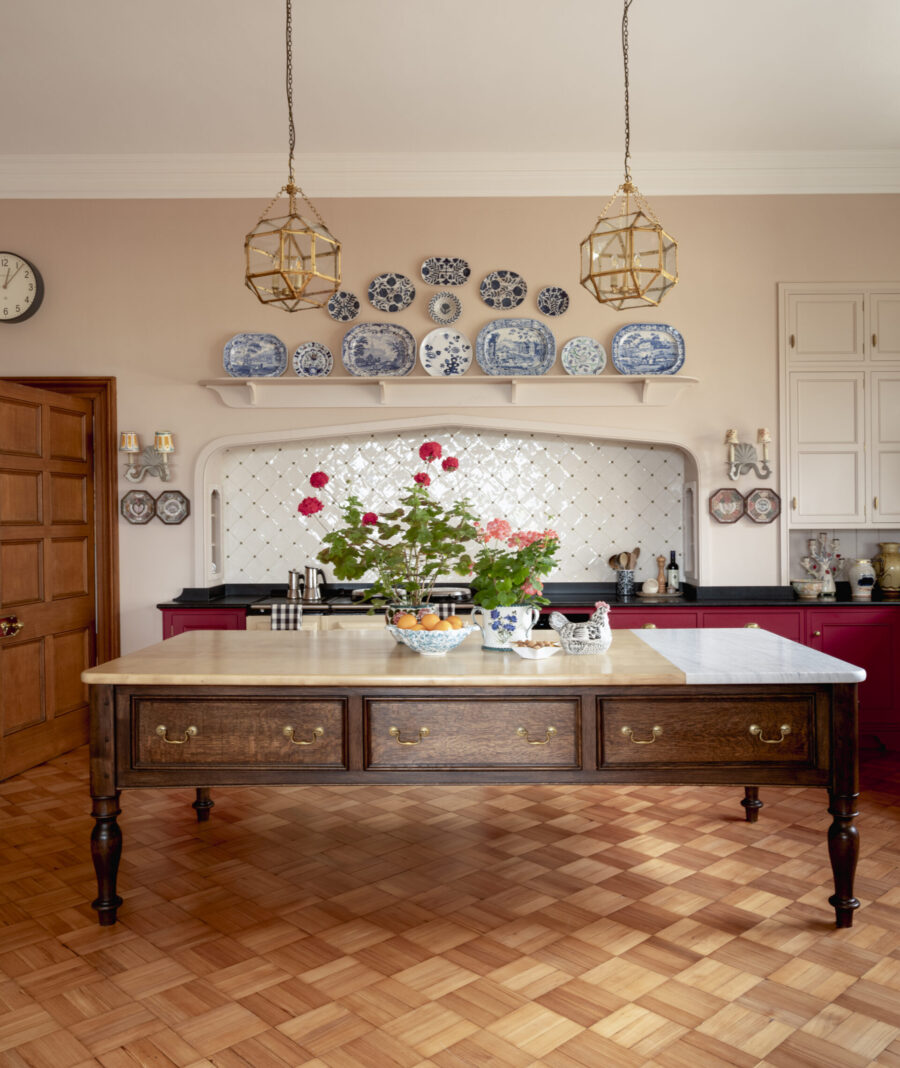
The Cook’s Table or Dairy Table – A Functional Centrepiece
Guild Anderson has been designing cook’s tables or dairy tables since 2015, when we were awarded the commission to design the domestic back of house spaces for Stockton House, a Grade I listed Elizabethan house which has remained in private ownership since first built in the late 16th Century.
Today, as more clients embrace the timeless appeal of English country house style, the cook’s table or dairy table is returning not as a novelty, but as a functional and attractive centrepiece.
Its resurgence is a reaction against overly sleek, built-in kitchen islands that can feel too bulky in period country homes. Buyers with a discerning eye are choosing pieces which echo the heritage and craftsmanship of traditional estate joinery and the architecture of their house; furniture with a sense of purpose, permanence and patina, designed to endure.
We work in country houses of every size, and in larger kitchens particulary we try and be conservative with the volume of furniture we propose. We like to let the architectural detail do much of the talking, and keep the space as free as possible. Introducing a Guild Anderson cook's table adds interest and elegance to the centre of the room without becoming too obtrusive.
Laura Cesar (Designer at Guild Anderson)
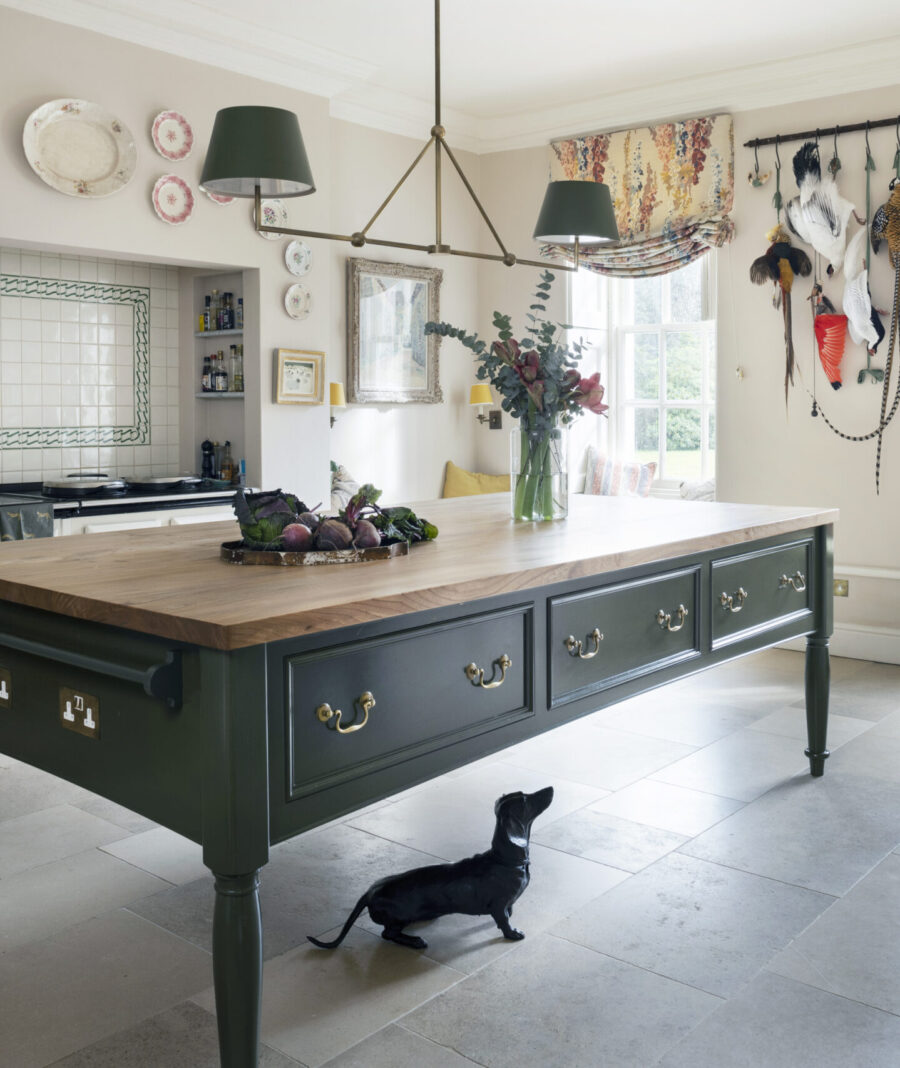
The Cook’s Table – understated aesthetic
One of the great strength of the cook’s table (or dairy table) is its majestic, understated aesthetic. It can serve as a food preparation area or a serving table during gatherings, just as a normal island would, but with more elegance and less bulk. It is a piece of furniture in its own right.
Some modern interpretations include integrated marble slabs for pastry work (as per the cook’s table at Lanhydrock House in Cornwall), pull-out breadboards within the drawers, or even hidden warming drawers (such as the cook’s table we designed for Trewithen (a Grade 1 listed Palladian house in Cornwall), thereby blending historic charm with contemporary utility.
But the appeal is more than just aesthetics. The cook’s table tells a story. It evokes a way of life, rooted in self-sufficiency, seasonal cooking, and the rhythm of estate kitchens past. It speaks to the current appetite for kitchens that don’t just look good in a photograph, but feel lived-in, layered, and rooted in place.
The new kitchen island
Offering versatility with elegance, cook's tables sit beautifully at the centre of the English country house kitchen. They also offer a great space for dogs to lie under.
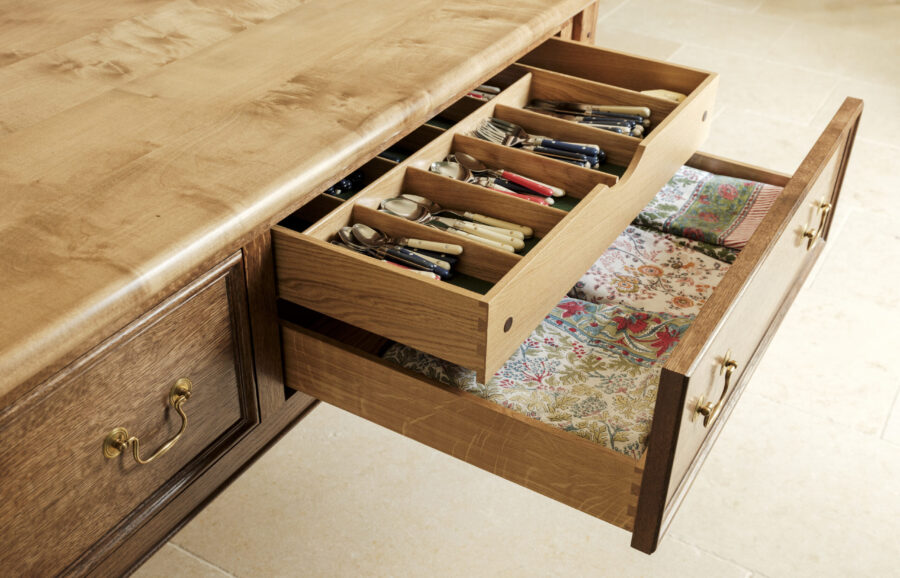
Two drawers in one. Cutlery above (lined in baize) with napkins below.
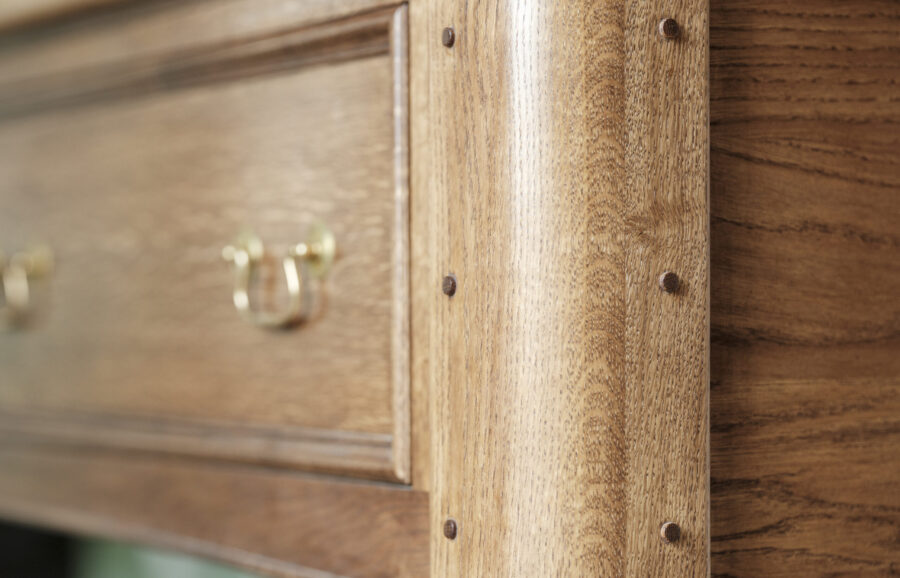
Solid timber oak legs, with traditionally pegged tennon joints.
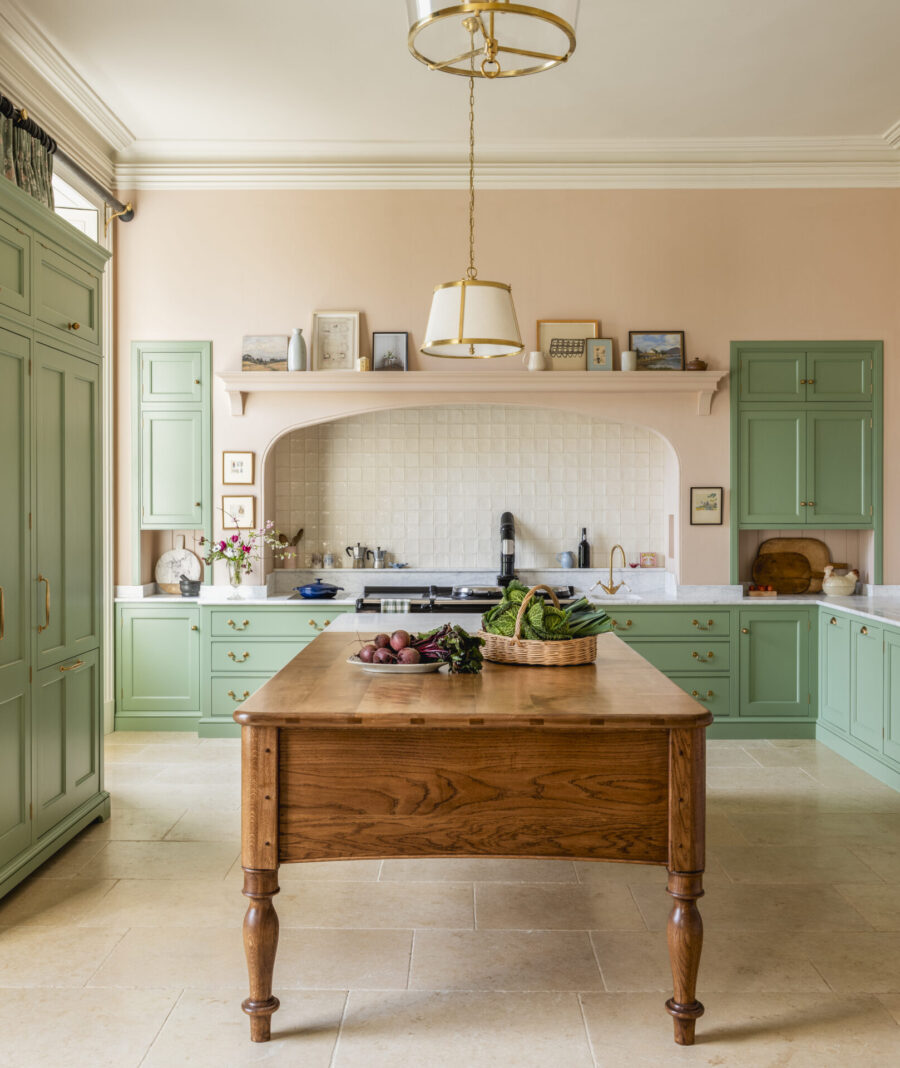
The Dairy Table – Enduring Craftsmanship
Over the past ten years, as our heritage inspired kitchen design approach has become more in vogue with country house owners, we have been able to respond to client briefs with beautifully crafted, bespoke versions of cooks tables that can be tailored in scale, timber, and finish to suit the specific architecture of a room.
Whether antique or newly made, a well-designed cook’s table or dairy table can become the soul of the kitchen, acting as a tactile link between old and new.
In a world of mass production and fleeting trends, the cook’s table stands as a symbol of enduring craftsmanship and slow, considered living. For many, that’s exactly what makes it so appealing.
COOK’S TABLES – THE PRACTICALITIES
Clients will often ask about their practicalities, which will always come into play with any kitchen project. It’s typical for our cook’s tables to be the same height as the kitchen cabinetry, so around 920mm. We sometimes add thicker marble, usually 40mm, particularly when the stone top abuts to a wooden top which can look flimsy at 30mm thick.
Casual seating at a cook’s table of this height can present design challenges, and it can compromise their look. None of the original tables found in the heritage archives are designed for casual sitting, so adding provision for it can upset the historic feel, making a period piece appear more modern. Almost all Guild Anderson cook’s tables have deep drawers, so often the best way to sit at them without compromising the design for tall stools is to purchase smaller stools which can rest under the table when not in use.
Power is introduced to them by being fed up one of the table legs. This requires your builder to be very precise with where the cable is bought up through the floor. They will need to ensure they take note of the datum measurements we issue to ensure accuracy.


